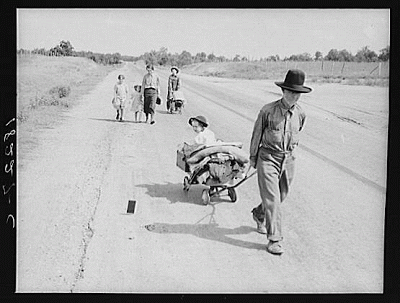Last month saw the launch of what may become
the digital repository for American history--the
Digital Public Library of America. Aiming to unite "the riches of America’s libraries, archives, and museums, and makes them freely available to the world," the DPLA has correctly been called the latest chapter in
the dream of a universal library. So let's check it out.
The DPLA is headed up by
Dan Cohen, former Director of the Roy Rosenzweig Center for History and New Media at George Mason University and clearly the right man for the job. There is a
Board of Directors of impressive individuals from various elite east cost institutions. The DPLA is starting up with a
sack full of grant money and some
high-profile content partners such as the Smithsonian.
Though there are a raft of articles about the launch of the DPLA, I would recommend
this episode of the Digital Campus podcast, which is devoted to the DPLA. Cohen is one of the hosts of this long-running podcast, and this special episode has Cohen discussing at great length the goals of the project, concerns about its potential impact on other public libraries, decisions made about the interface and search abilities, and an API for developers. I do not see a counter on the DPLA site to tell us how many items are currently available, but in the podcast Cohen explains that the site will launch with millions of objects, and quickly ramp up to tens of millions. Let's see what they have!
A search for Spokane brings up
491 results. Fortunately the tools for refining a search are robust--on can refine by file type (text, image, sound, moving image), by date, by language, by owning institution or partner, by location and by subject. Really the site design is superb--the DPLA is simple, intuitive, and works as well on a smartphone or tablet as on a laptop. Drilling down through my results I caught sight of a cool 1956 tourists guide to Spokane. What you can do with items at the DPLA depends on the hosting partner--most of the search results at the DPLA take you away from the site to the partner's website. At the Ramsey collection, images can be magnified and explored with a slick interface, downloaded in a variety of resolutions and formats, and even embedded:
So what else can we discover about our far-from-Harvard corner of the world at the DPLA? The results are a bit of what the English call "a dog's breakfast," a mix of uneven content. The results reflect the collections of the largely east-coast content partners. So we find
gorgeously-digitized botanical specimens collected along the Spokane River in the 1890s and now housed at the Smithsonian, quite a few c
ultural objects from the Spokane tribe also from the Smithsonian, some
fascinating printed volumes that I had not seen before from various sources, odds and ends of government reports,
scattered photographs from different archives, and even an
MP3 of the call of a ruddy duck. I love
this 1878 photo of the Spokane River near Fort Spokane. This part of the river is long-since flooded by the hydroelectric dams:
So already a month after launch the DPLA has significant content for our neck of the woods. It would seem churlish to complain. The content though is of certain particular types, reflecting the DPLA partnerships so far. Government reports, surveys and tourists guides, biological and ethnological collections from 19th-century Smithsonian
looters explorers, nearly everything about Spokane is from someone who had no connection with the place except to have visited. The whole enterprise reminds me just a little of the classic
New Yorker cover, The World As Seen From New York's 9th Avenue:
I jest--the vision of the DPLA is not so myopic. And there are a few western partners, including the
Mountain West Digital Library and---well actually they are it so far. This worthy project is at an early stage, of course there are holes. I do hope however that the DPLA staff recognizes the problem, and is actively seeking partners all around the country. There are a tremendous number of digital history projects out past the Hudson, many featured over the years at this blog.
I even work at one of them.
Dan, give me a call.
















